I promised to post photos from Scotland once I had a chance to go through all 800 or so from my 7D, and today, I had a (short) chance.
First: the Scottish National Gallery, Edinburgh, where we had breakfast on August 8th:
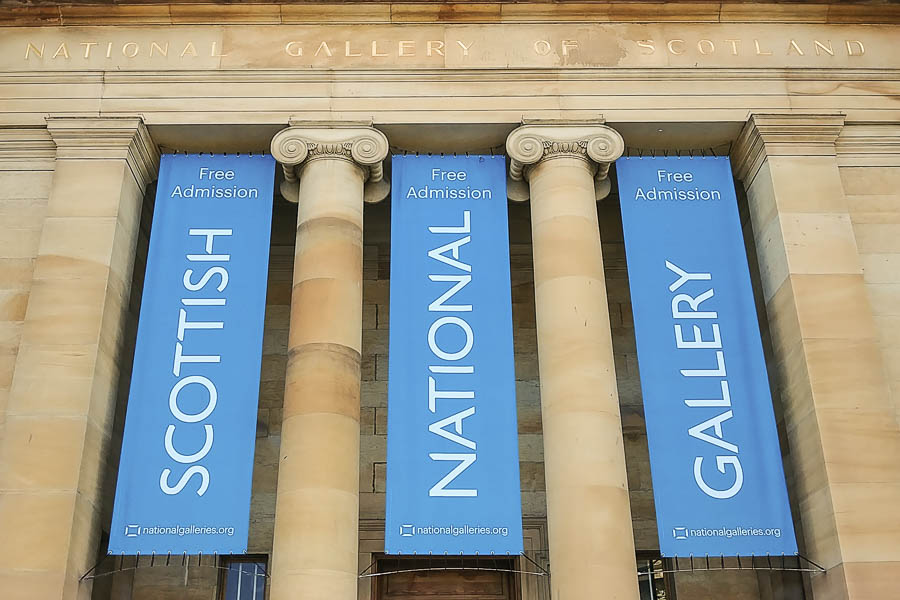
Second, Glenmachrie House, where we stayed:
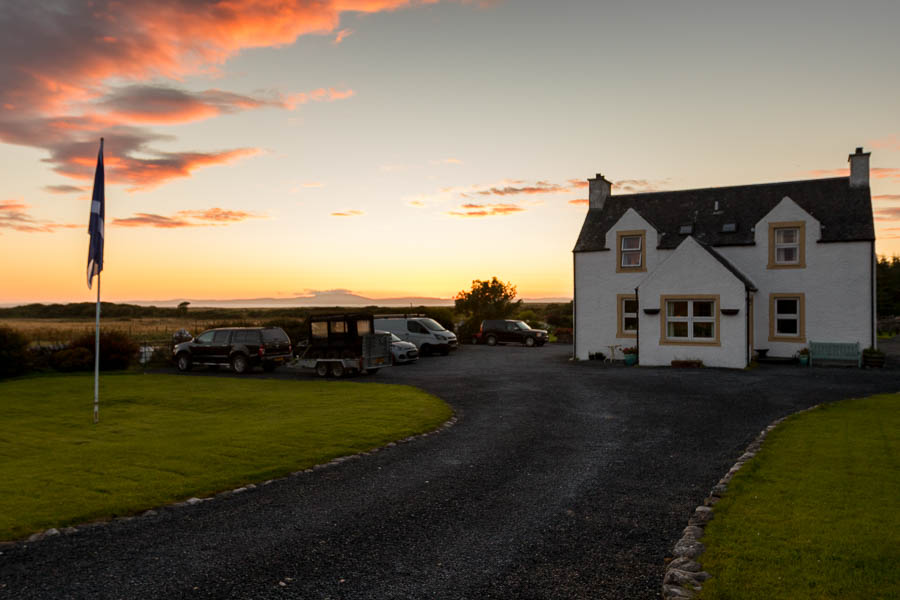
(This is the reverse of the image I posted earlier, about an hour later, and with a real camera and HDR software.)
More tomorrow.
Via WGN-TV, the fourth-largest city in the U.S. has received more rain in the last week than Chicago receives in an average year.
Chicago's average annual precipitation is 910 mm. Since last Friday, Houston has gotten 1,070 mm. The wettest year in Houston history (1900) dumped 1,851 mm on it. So far this year, with 4 months left to go, Houston has gotten 1,798 mm. Of course, the odds are pretty good that the city will get another 53 mm of rain before December 31st.
We have no idea how bad the damage is yet. The entire Houston Chronicle website is about the flood. At least the rain has stopped for now—but officials worry about additional reservoir overflows and levee breaks.
We're just beginning to understand the magnitude of this disaster. And with key Federal posts, including FEMA Director, yet to be filled, President Trump is so out of his depth one can only hope that state and local governments can help.
Hurricane Harvey has dropped so much rain on Houston that two 1930s-era dams have been overwhelmed for the first time in history:
The U.S. Army Corps of Engineers confirmed Tuesday morning that water was spilling from around the dam gates of the Addicks Reservoir, which has been overwhelmed by extreme rainfall from Hurricane Harvey. Officials said they expect the Barker Reservoir, to the south of Addicks, to begin overflowing similarly at some point Tuesday.
A Harris County Flood Control District meteorologist said the overflow from the reservoirs would eventually flow into downtown Houston.
The reservoirs, which flank Interstate 10 on the west side of Houston, flow into the Buffalo Bayou and are surrounded by parks and residential areas. Water levels in the two reservoirs had already reached record levels Monday evening, measuring 32 m at Addicks and 30 m at Barker.
Engineers were unable to measure water levels at the Barker Reservoir on Tuesday because its gauge was flooded overnight, said Jeff Lindner, the Harris County flood control meteorologist.
In response, City Lab asks, why can't the U.S. manage flooding?
For New Orleans, whose below-sea-level position makes it particularly imperiled, the August floods were a reminder of something we should take much more seriously than we have. We ought to apply more aggressively the lessons we claimed to be learning from the Dutch after Katrina. It’s a course of action that would amount to a sea change in how we approach the wet threat that surrounds us on every side.
We need to get as smart and wily about water as Rotterdam. New Orleans’s continued viability as a population center and commercial hub depends on it. We must learn to live with water, to absorb rainfall and storm surge in massive retention facilities, to designate greenspaces that double as parks. We need to stop paving our yardsto make nifty little pads for the family car. We need to build absorbent rooftop gardens on as many buildings as can be put to that purpose.
Speaking of, I'm planning to visit New Orleans this weekend. Harvey is expected to pass northwest of the city tomorrow and land in the Tennessee Valley by Friday afternoon. I'm still bringing water shoes and an umbrella.
On Tuesday, a Federal judge in Chicago dismissed with prejudice a case against Zillow that alleged its "Zestimates" made houses harder to sell:
In the suit, first filed in May, Glenview homeowner and attorney Barbara Andersen alleged that the estimates Zillow posts with for-sale listings essentially act like an appraisal of exact market value. Under Illinois law, only licensed appraisers can issue an appraisal. Andersen's suit alleges Zillow is engaging in illegal practices.
Not so, U.S. District Judge Amy St. Eve wrote in her dismissal. "The word 'Zestimate'—an obvious portmanteau of 'Zillow' and 'estimate'—itself indicates that Zestimates are merely an estimate of the market value of the property," St. Eve wrote.
"We always say that the Zestimate isn't an appraisal," [Zillow's] Emily Heffter told Crain's earlier this year. "It's a starting point that people can use when they're working with a professional appraiser or a professional agent to determine the home's value."
St. Eve also wrote that Zillow's estimates do not constitute an invasion of privacy because they are based on public records, with additions submitted by the homeowners if they choose to.
It zeems obvious, when you think about it.
I'm back home, and I've shoved all the Scotland photos out of the way so I could post this:
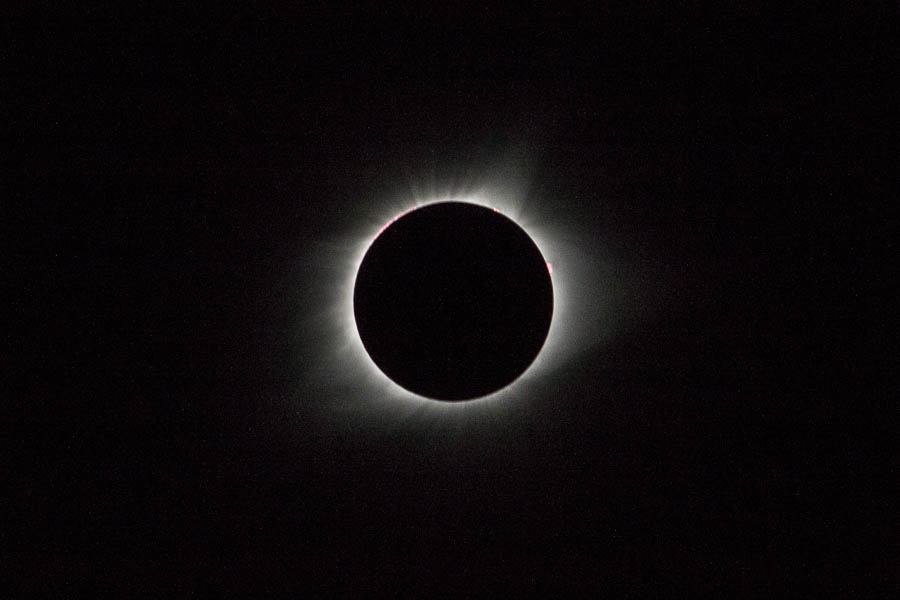
I didn't notice until I processed the photos from my 7D, but there are two solar storms visible: one at about 3 o'clock and the other, fainter one at about 1 o'clock.
We're already looking into a vacation in Chile in the summer of 2019...
I'm heading to Missouri tomorrow to get into position for Monday's eclipse. Since Springfield is on the way, I spent the day at the Illinois State Fair. Again. So, naturally, we had to make a pilgrimage to the butter cow:
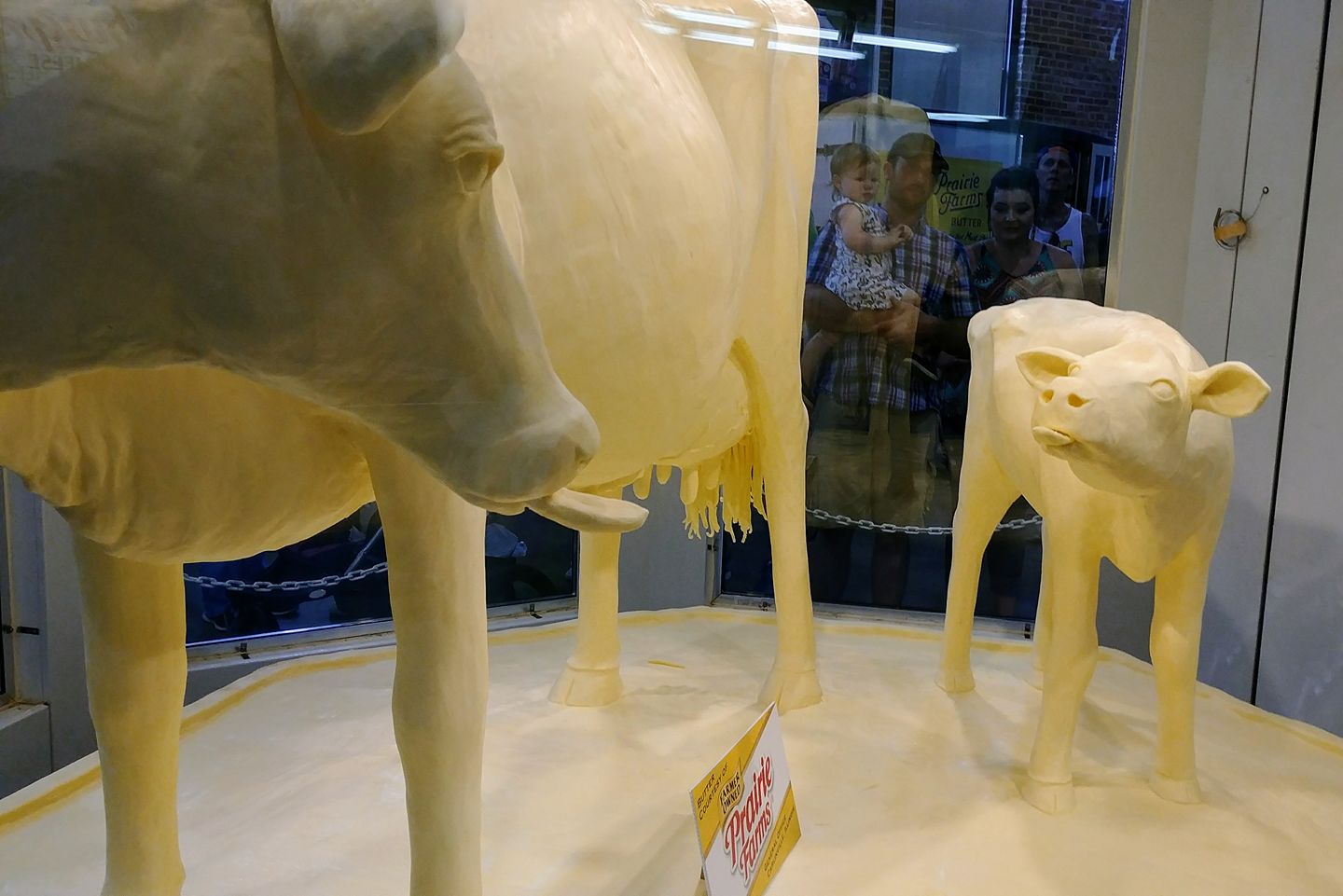
No idea what we're doing tomorrow, but Monday we'll be standing in a parking lot with our eclipse glasses on.
And sweating. It's warm out there.
Via Mother Jones, the Southern Poverty Law Center has published a report that examines the statues to Confederate heroes of the sort that sparked last weekend's violence in Charlottesville, Va. It should surprise no one with a modicum of historical knowledge that they went up during periods of exceptional violence against African-Americans:
[T]he argument that the Confederate flag and other displays represent “heritage, not hate” ignores the near-universal heritage of African Americans whose ancestors were enslaved by the millions in the South. It trivializes their pain, their history and their concerns about racism — whether it’s the racism of the past or that of today.
And it conceals the true history of the Confederate States of America and the seven decades of Jim Crow segregation and oppression that followed the Reconstruction era.
There were two major periods in which the dedication of Confederate monuments and other symbols spiked — the first two decades of the 20th century and during the civil rights movement.
Southerners began honoring the Confederacy with statues and other symbols almost immediately after the Civil War. The first Confederate Memorial Day, for example, was dreamed up by the wife of a Confederate soldier in 1866. That same year, Jefferson Davis laid the cornerstone of the Confederate Memorial Monument in a prominent spot on the state Capitol grounds in Montgomery, Alabama. There has been a steady stream of dedications in the 150 years since that time.
But two distinct periods saw a significant rise in the dedication of monuments and other symbols.
The first began around 1900, amid the period in which states were enacting Jim Crow laws to disenfranchise the newly freed African Americans and re-segregate society. This spike lasted well into the 1920s, a period that saw a dramatic resurgence of the Ku Klux Klan, which had been born in the immediate aftermath of the Civil War.
The second spike began in the early 1950s and lasted through the 1960s, as the civil rights movement led to a backlash among segregationists.
Mother Jones prepared this handy graph:
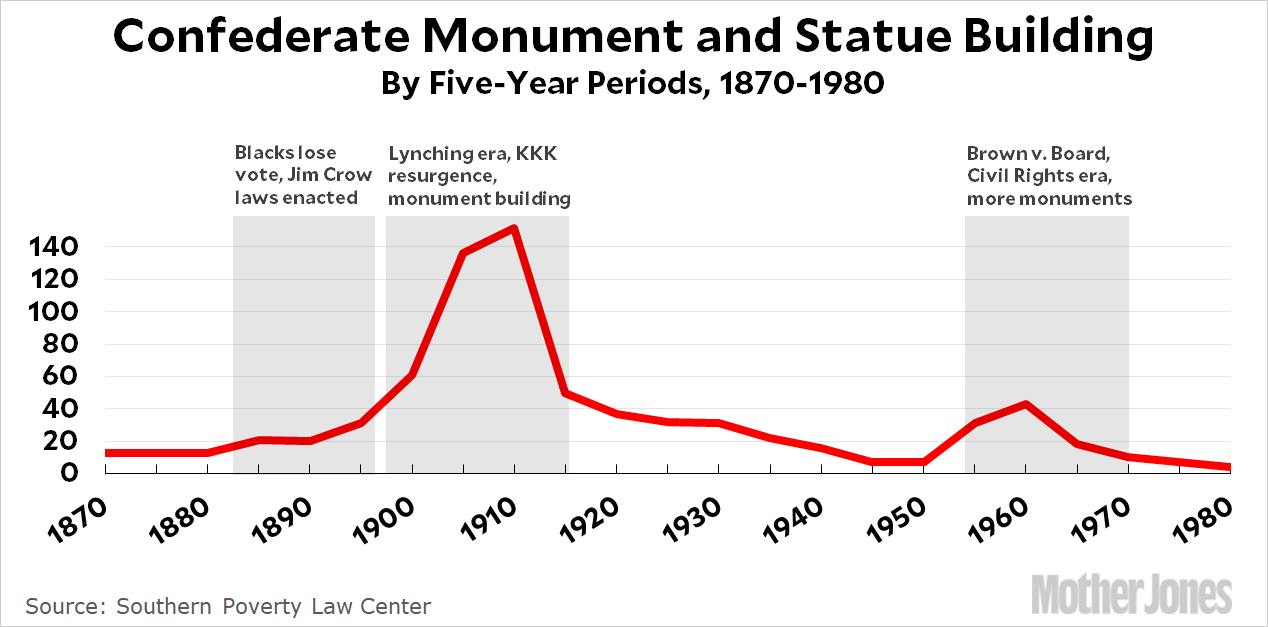
So, yes, these statues represent history: the history of Southern oppression of African-Americans throughout the Jim Crow era. Southern whites erected them as symbols of white supremacy and violence.
And they need to go away now.
Despite (or because of, unclear) normal Scottish weather, we killed an hour at the Laphroaig Distillery before heading out on the ferry back to the mainland. I claimed my rent on my one square foot of land* and my dram of the 10 year old. Then we got a couple more drams (in takeaway containers), a book, some lip balm, and rained upon. But I did manage this photo through the window:
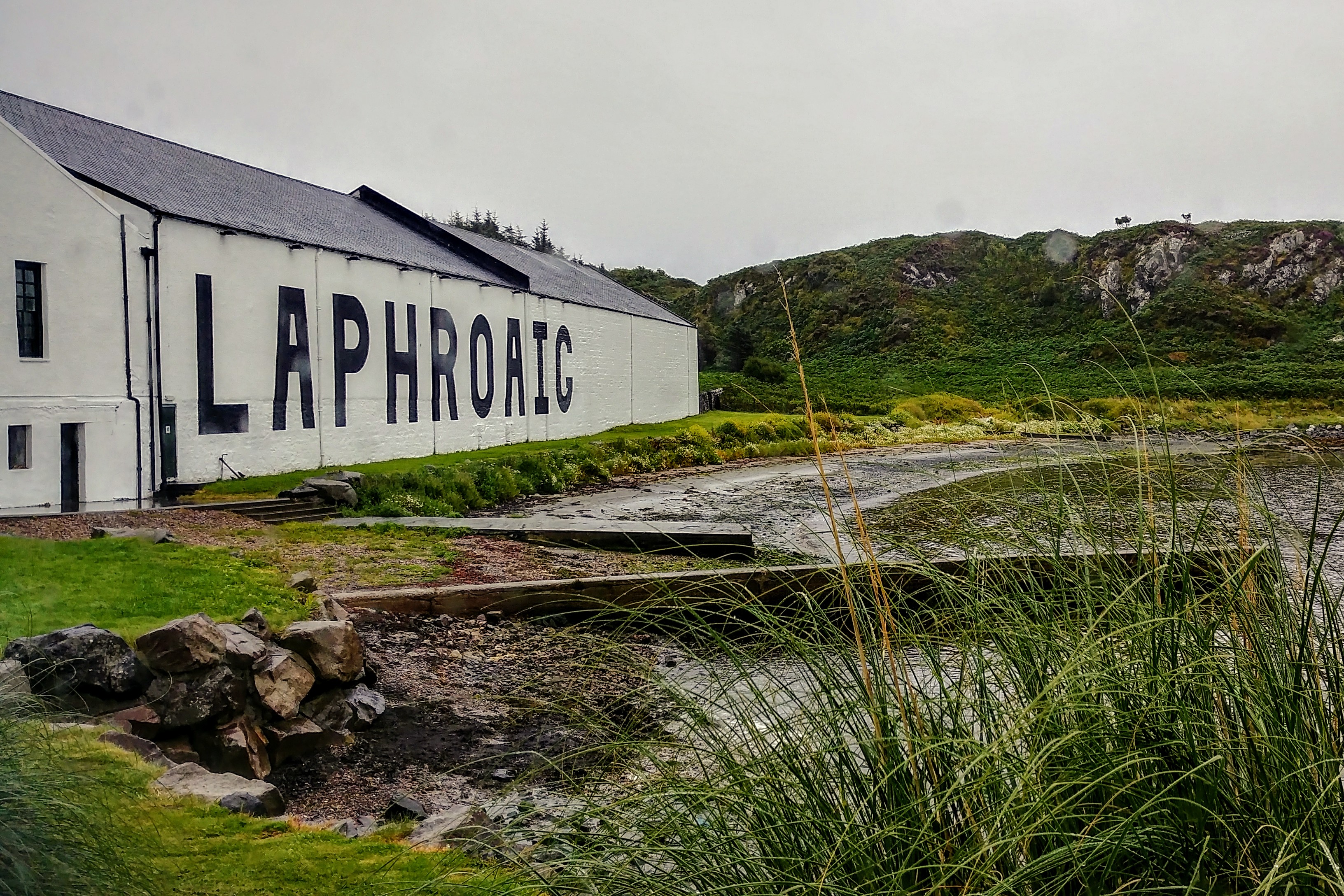
And then we headed to the ferry and said goodbye to Islay (for now):
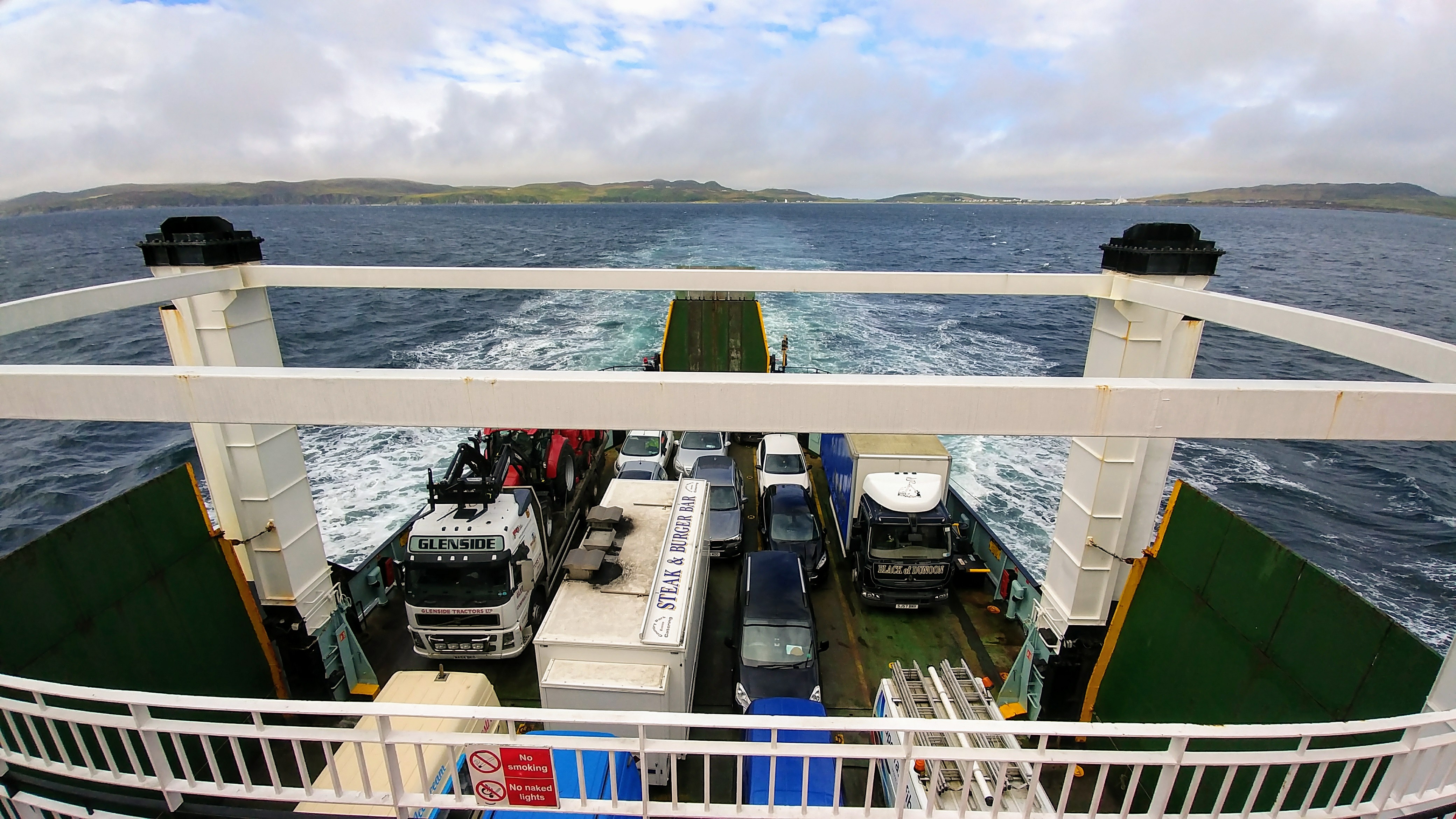
Now, as was common in days of yore, we're taking a few days to get back home. We stopped for lunch at the Drovers Inn outside Loch Lomond, and now we're in Glasgow.
* The coordinates on my certificate are the coordinates showing on the map there, but there are differences between what GPS says and what maps say all the time. I'm not sure if this is a mismatched datum or that Laphroaig's GIS don't agree with Google's. There are tons of reasons why this would be. But it's fun anyway.
When we started planning this trip in May, it didn't occur to us that we would spend half a day at the Ileach equivalent of a county fair, complete with purple sheep:

The day started here, however:
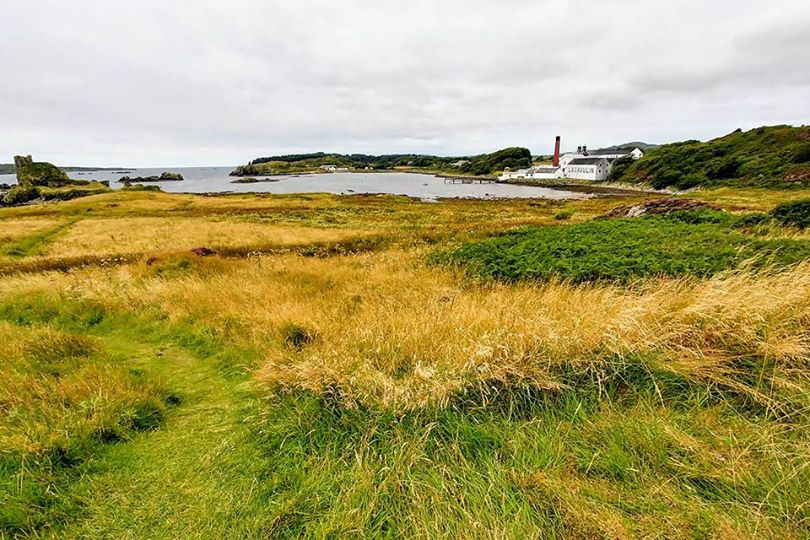
We took part in the warehouse tasting, in which Lagavulin's Iain Macarthur let us taste some malts pulled right out of the barrels, including a 35-year-old and a 23-year-old, worth well over £150 each.
Now we're chilling before catching live music at the only venue that's open anywhere near us tonight, the Islay Hotel.
Today, after a 6 km walk through squelchy bogs from Ardbeg up to Solam, and a drive to Bowmore, we had dinner in Port Ellen just before sunset. This was the scene after dinner:
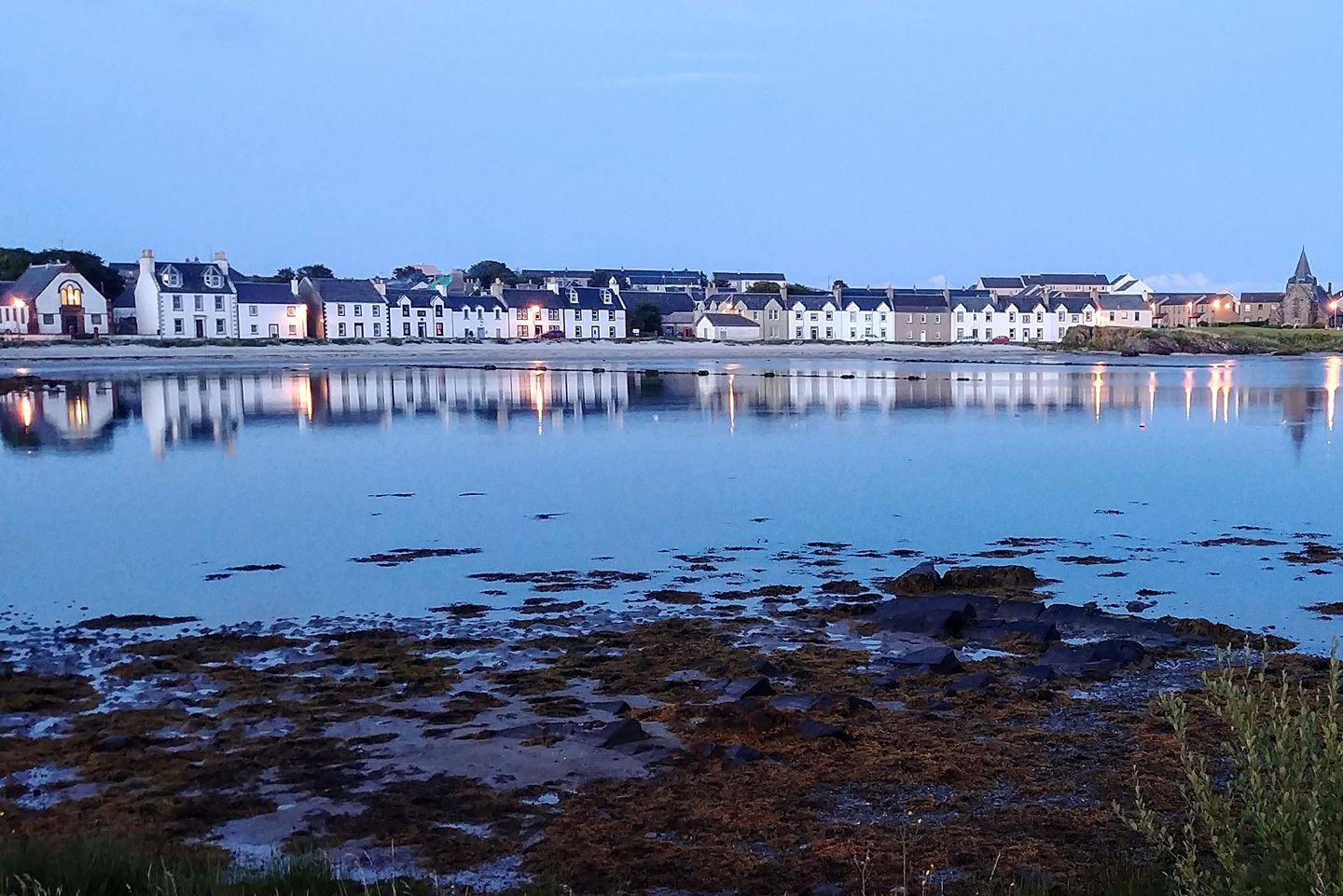
I've got 759 photos to get through when we get back to the US in a couple of days. Meanwhile, my phone camera seems to be doing an adequate job, as the shot above shows. I think my SLR will yield better results overall, but for holiday snaps, the phone doesn't suck. I like living in the future.